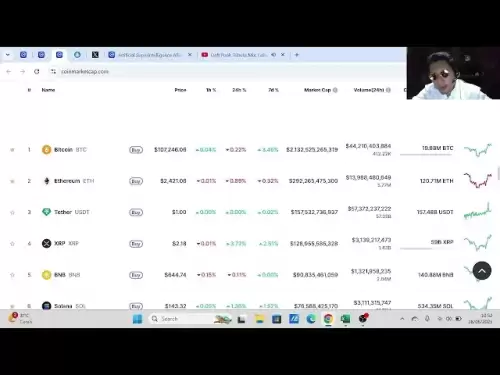-
 Bitcoin
Bitcoin $107,352.1067
0.28% -
 Ethereum
Ethereum $2,429.3531
-0.90% -
 Tether USDt
Tether USDt $1.0001
-0.02% -
 XRP
XRP $2.1894
4.62% -
 BNB
BNB $646.7968
0.36% -
 Solana
Solana $147.4290
4.03% -
 USDC
USDC $0.9998
-0.02% -
 TRON
TRON $0.2756
1.52% -
 Dogecoin
Dogecoin $0.1630
1.14% -
 Cardano
Cardano $0.5612
1.18% -
 Hyperliquid
Hyperliquid $37.0580
-0.05% -
 Bitcoin Cash
Bitcoin Cash $496.9410
-0.09% -
 Sui
Sui $2.7318
3.19% -
 Chainlink
Chainlink $13.1503
0.58% -
 UNUS SED LEO
UNUS SED LEO $9.0766
0.55% -
 Avalanche
Avalanche $17.7220
1.46% -
 Stellar
Stellar $0.2380
1.52% -
 Toncoin
Toncoin $2.8439
0.38% -
 Shiba Inu
Shiba Inu $0.0...01143
1.84% -
 Litecoin
Litecoin $85.8053
1.47% -
 Hedera
Hedera $0.1483
2.70% -
 Monero
Monero $314.3240
2.12% -
 Bitget Token
Bitget Token $4.6725
0.77% -
 Dai
Dai $1.0000
0.00% -
 Polkadot
Polkadot $3.3555
1.28% -
 Ethena USDe
Ethena USDe $1.0001
0.02% -
 Uniswap
Uniswap $7.0890
2.64% -
 Pi
Pi $0.5355
-3.40% -
 Pepe
Pepe $0.0...09393
1.06% -
 Aave
Aave $256.8136
-1.90%
What is USDT for and who uses it?
USDT is a stablecoin pegged to the US dollar, used to reduce the risk of cryptocurrency investment and facilitate transactions and cross-border payments. Users include investors, traders and users who need cross-border payments.
Mar 31, 2025 at 01:54 pm
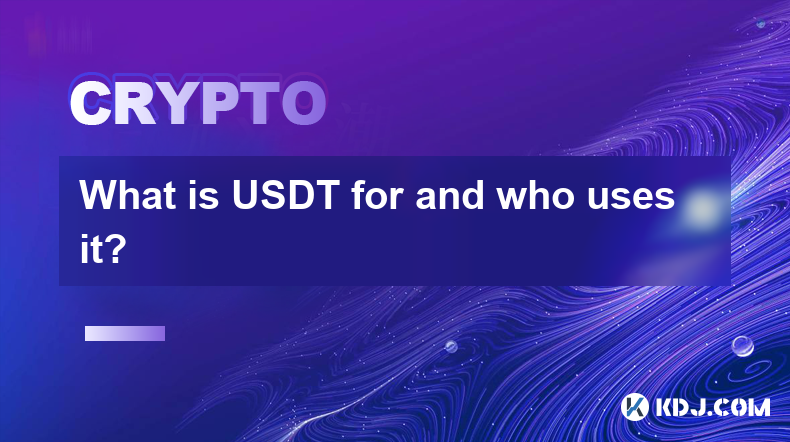
What does USDT do? Who can use it?
USDT: The purpose of stablecoins and user groups
USDT, full name Tether, is a stablecoin pegged to the US dollar. This means that 1 USDT should theoretically always be worth $1. Its main function is to provide a relatively stable store of value and trading medium in the cryptocurrency market, reducing the risks brought about by cryptocurrency price fluctuations.
The main uses of USDT:
Reduce risks: The cryptocurrency market is volatile, and USDT, as a stablecoin, can help investors protect their assets when the market falls and avoid huge losses. You can convert high-volatility cryptocurrencies such as Bitcoin into USDT and then exchange them back after the market picks up.
Convenient trading: Many cryptocurrency exchanges support USDT trading pairs. Using USDT for trading is more convenient and fast than directly using fiat currency trading, and the handling fee is relatively low.
Cross-border payment: USDT can bypass the limitations of the traditional financial system and achieve faster and lower-cost cross-border payments. This is especially important for some areas that lack a sound financial infrastructure.
Hedging: Some investors use USDT for hedging to hedge the risk of falling cryptocurrency prices.
Who will use USDT?
USDT has a wide range of user groups, including:
Cryptocurrency Investors: This is the main user group of USDT. They use USDT to reduce investment risks, facilitate trading, and hedge operations.
Cryptocurrency Trader: Traders frequently trade cryptocurrencies, and using USDT can improve transaction efficiency and reduce transaction costs.
Cross-border payment users: Users who need to make cross-border payments can use USDT to bypass the restrictions of the traditional financial system and achieve more convenient payments.
Institutional Investors: Some institutional investors have also begun to use USDT to invest and manage assets to reduce risks and improve efficiency.
Ordinary users: Some ordinary users who are interested in the cryptocurrency market but are worried about the high risk may also choose to hold a small amount of USDT.

USDT's operating mechanism:
Tether claims that each USDT issued corresponds to a $1 reserve in their account. However, this claim has been controversial, and the transparency and authenticity of its reserves are often questioned. Understanding the risks of USDT is crucial, it is not completely without risks. Tether faces regulatory and legal challenges that could affect USDT's price stability.
Risks of using USDT:
Price fluctuation risk: While USDT is designed to maintain a 1:1 ratio to the US dollar, there have been short-term decoupling in history, which may lead to losses.
Regulatory risks: Governments are increasingly strict in regulation of stablecoins, which may affect the future development and use of USDT.
Credit Risk: Tether's financial position and reserve transparency have been controversial, which poses USDT's credit risk.
Security Risk: Like all cryptocurrencies, USDT is at risk of hacking and security breaches.
How to get USDT?
Generally speaking, you can obtain USDT through the following channels:
Cryptocurrency Exchange: Most mainstream cryptocurrency exchanges support USDT trading pairs, you can buy USDT in other cryptocurrencies or fiat currencies.
OTC: You can buy USDT through some OTC platforms.
Wallet: Some cryptocurrency wallets that support USDT, allowing you to receive and store USDT.
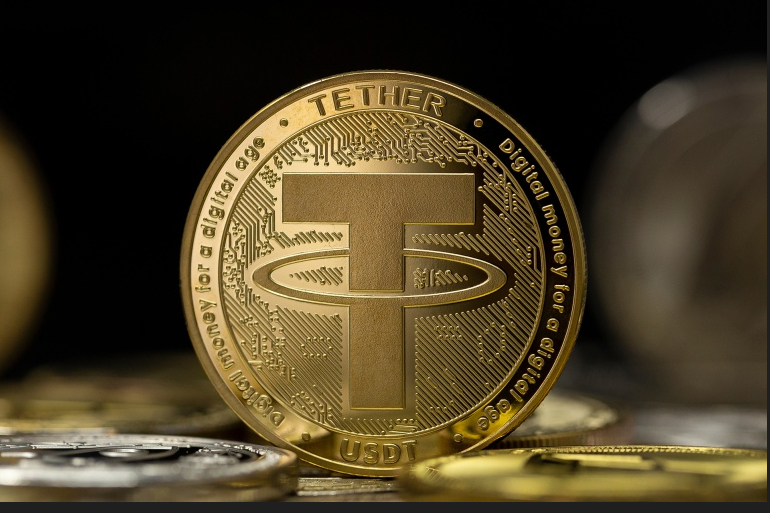
Comparison of USDT with other stablecoins:
There are a variety of stablecoins on the market, such as USDC, BUSD, etc., which are similar to USDT and are all aimed at maintaining a stable exchange rate with the US dollar. Which stablecoin you choose depends on your risk preferences and your level of trust in different issuing institutions. Each stablecoin has its own operating mechanism, risks and advantages.
FAQ:
Q1: Is USDT safe?
A1: USDT is not absolutely safe. It faces risks such as price fluctuations, regulation, credit and security. Users need to carefully evaluate these risks and invest based on their own risk tolerance.
Q2: Will the USDT price remain at $1?
A2: In theory, USDT should always be worth $1. However, there has been a brief decoupling phenomenon in history. There is no guarantee that the price of USDT will always remain at $1.
Q3: What can USDT be used for?
A3: USDT can be used to reduce the risk of cryptocurrency investment, conduct convenient cryptocurrency transactions, and conduct cross-border payments.
Q4: What are the requirements for purchasing USDT?
A4: Generally speaking, you need a cryptocurrency exchange account and certified by KYC (Know Your Customers). Specific requirements vary by exchange.
Q5: What is the difference between USDT and USD?
A5: USDT is a cryptocurrency, while USD is fiat currency. USDT is intended to be pegged to the US dollar, but is not equivalent to the US dollar. While the price volatility of USDT is smaller than that of other cryptocurrencies, there are still risks.
Q6: What is the future development of USDT?
A6: The future development of USDT depends on whether it can continue to maintain a stable peg with the US dollar and whether it can cope with an increasingly strict regulatory environment. This is still a question of uncertainty.
Disclaimer:info@kdj.com
The information provided is not trading advice. kdj.com does not assume any responsibility for any investments made based on the information provided in this article. Cryptocurrencies are highly volatile and it is highly recommended that you invest with caution after thorough research!
If you believe that the content used on this website infringes your copyright, please contact us immediately (info@kdj.com) and we will delete it promptly.
- Across Crypto Project Faces Heat: Secret $23M Transfer Sparks Governance Debate
- 2025-06-28 16:30:13
- Trump Coin's Wild Ride: Liquidity Drain, Exchange Deposits, and What It Means for Binance & OKX
- 2025-06-28 16:50:13
- Solana, XRP, and Spot ETFs: A New York Minute on Crypto's Shifting Sands
- 2025-06-28 17:10:13
- Trump, Memecoin Mania, and Whale Watching: A New York Minute in Crypto
- 2025-06-28 16:30:13
- Gemini, Tokenized Stocks, and Europe: A New Era for Investment?
- 2025-06-28 17:10:13
- Shiba Inu, Lending Coins, and Early Holders: A New Frontier
- 2025-06-28 16:51:59
Related knowledge

How to choose a reliable USDT exchange service provider? How to identify?
Jun 12,2025 at 03:15pm
Understanding the Role of USDT in Cryptocurrency TradingUSDT (Tether) is one of the most widely used stablecoins in the cryptocurrency market. It is designed to maintain a 1:1 peg with the U.S. dollar, offering traders and investors a way to hedge against volatility while remaining within the crypto ecosystem. Choosing a reliable USDT exchange service p...
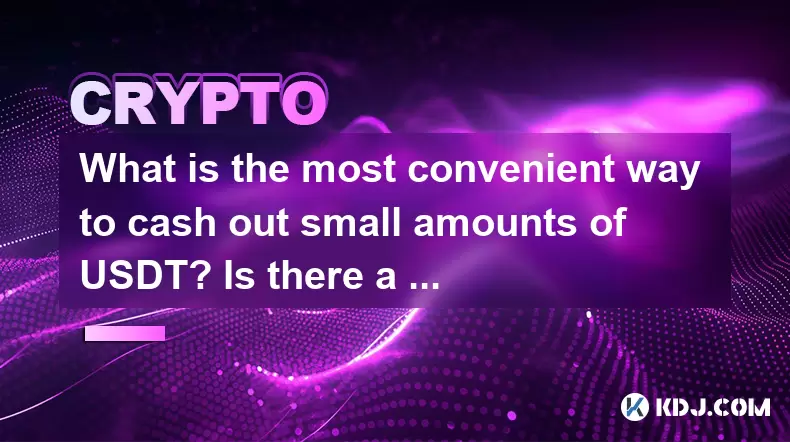
What is the most convenient way to cash out small amounts of USDT? Is there a shortcut?
Jun 11,2025 at 11:00pm
Understanding the Need to Cash Out Small USDT AmountsCashing out small amounts of USDT can be a challenge for many crypto users. Traditional methods often involve high fees, minimum withdrawal limits, or cumbersome verification processes that make it inefficient for small transactions. The key is to find a method that balances speed, cost, and convenien...
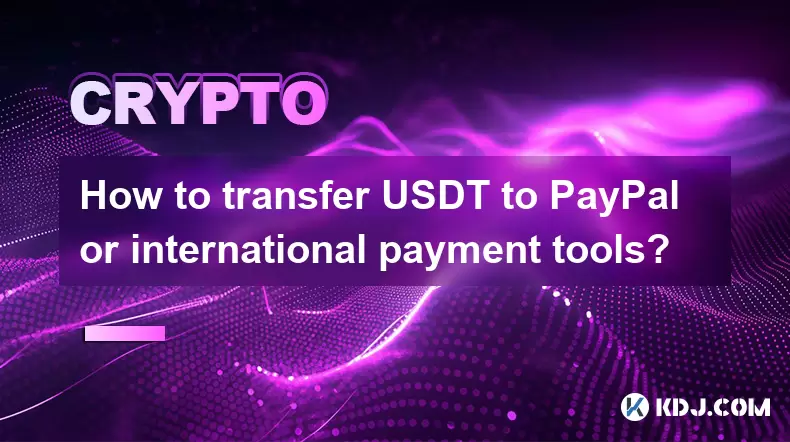
How to transfer USDT to PayPal or international payment tools?
Jun 15,2025 at 05:28am
Understanding the Basics of USDT and PayPal IntegrationUSDT (Tether) is a stablecoin pegged to the US dollar, offering blockchain-based value transfer with minimal volatility. PayPal, on the other hand, is a centralized digital wallet that facilitates fiat currency transactions globally. Direct integration between USDT and PayPal does not exist due to t...
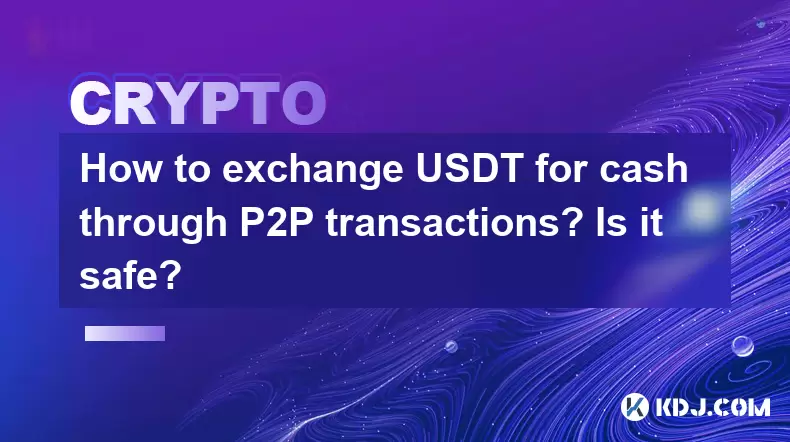
How to exchange USDT for cash through P2P transactions? Is it safe?
Jun 18,2025 at 07:56am
Understanding USDT and P2P TransactionsTether (USDT) is a stablecoin pegged to the value of the US dollar, making it a popular choice for users who want to avoid the volatility of other cryptocurrencies while still participating in the crypto ecosystem. Peer-to-peer (P2P) transactions allow individuals to trade directly with each other without going thr...
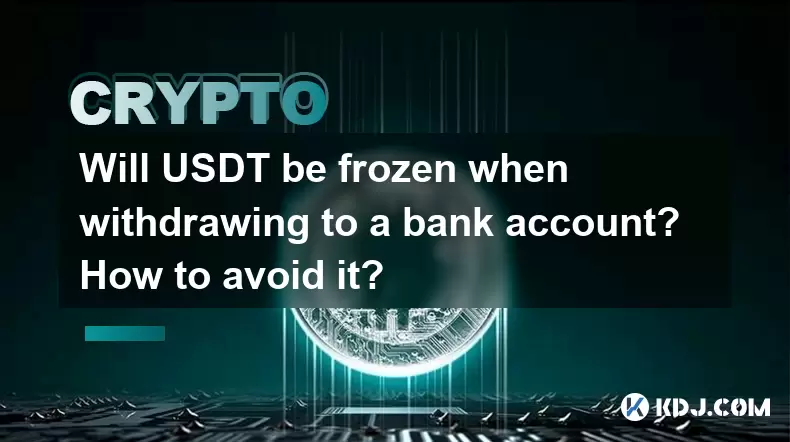
Will USDT be frozen when withdrawing to a bank account? How to avoid it?
Jun 15,2025 at 10:03am
Understanding USDT Withdrawals and Bank Account Freezing RisksWhen users decide to withdraw USDT (Tether) to a bank account, one of the most common concerns is whether their funds will be frozen during the process. This concern stems from real-life cases where individuals have encountered delays or restrictions when converting digital assets into fiat c...

How to avoid risks when exchanging USDT for cash? What are the pitfalls?
Jun 11,2025 at 08:14pm
Understanding the Risks of Exchanging USDT for CashWhen exchanging USDT (Tether) for cash, users must be aware of the potential risks involved. As a stablecoin pegged to the US dollar, USDT is widely used in crypto transactions due to its price stability. However, converting it into fiat currency like USD or CNY can expose users to several pitfalls, inc...

How to choose a reliable USDT exchange service provider? How to identify?
Jun 12,2025 at 03:15pm
Understanding the Role of USDT in Cryptocurrency TradingUSDT (Tether) is one of the most widely used stablecoins in the cryptocurrency market. It is designed to maintain a 1:1 peg with the U.S. dollar, offering traders and investors a way to hedge against volatility while remaining within the crypto ecosystem. Choosing a reliable USDT exchange service p...

What is the most convenient way to cash out small amounts of USDT? Is there a shortcut?
Jun 11,2025 at 11:00pm
Understanding the Need to Cash Out Small USDT AmountsCashing out small amounts of USDT can be a challenge for many crypto users. Traditional methods often involve high fees, minimum withdrawal limits, or cumbersome verification processes that make it inefficient for small transactions. The key is to find a method that balances speed, cost, and convenien...

How to transfer USDT to PayPal or international payment tools?
Jun 15,2025 at 05:28am
Understanding the Basics of USDT and PayPal IntegrationUSDT (Tether) is a stablecoin pegged to the US dollar, offering blockchain-based value transfer with minimal volatility. PayPal, on the other hand, is a centralized digital wallet that facilitates fiat currency transactions globally. Direct integration between USDT and PayPal does not exist due to t...

How to exchange USDT for cash through P2P transactions? Is it safe?
Jun 18,2025 at 07:56am
Understanding USDT and P2P TransactionsTether (USDT) is a stablecoin pegged to the value of the US dollar, making it a popular choice for users who want to avoid the volatility of other cryptocurrencies while still participating in the crypto ecosystem. Peer-to-peer (P2P) transactions allow individuals to trade directly with each other without going thr...

Will USDT be frozen when withdrawing to a bank account? How to avoid it?
Jun 15,2025 at 10:03am
Understanding USDT Withdrawals and Bank Account Freezing RisksWhen users decide to withdraw USDT (Tether) to a bank account, one of the most common concerns is whether their funds will be frozen during the process. This concern stems from real-life cases where individuals have encountered delays or restrictions when converting digital assets into fiat c...

How to avoid risks when exchanging USDT for cash? What are the pitfalls?
Jun 11,2025 at 08:14pm
Understanding the Risks of Exchanging USDT for CashWhen exchanging USDT (Tether) for cash, users must be aware of the potential risks involved. As a stablecoin pegged to the US dollar, USDT is widely used in crypto transactions due to its price stability. However, converting it into fiat currency like USD or CNY can expose users to several pitfalls, inc...
See all articles























